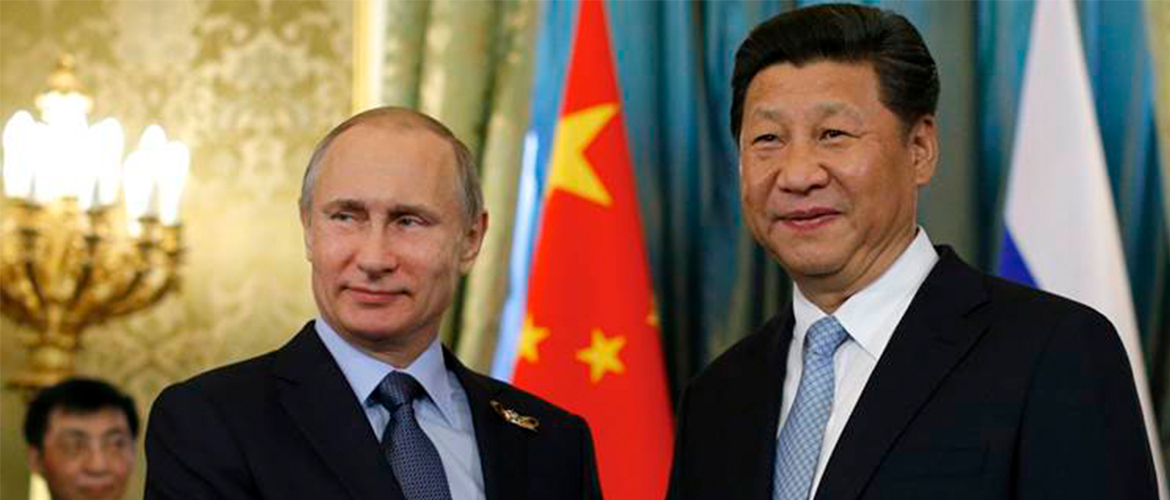Change of Guard – I
May 8, 2020 | Expert Insights
In this two-part series, the author has examined contemporary international power, in its three dimensions; diplomatic leadership, military muscle and economic power. He then makes projections into the post-COVID-19 world, to draw contours of the emerging world order. In this 1st part, he discusses the Liberal World Order, the Growth of the Chinese Dragon, the Rise of the European Union and the Dollar is still King!
The Liberal World Order
At the end of the 2nd World War, the US emerged as a superpower and the champion of the liberal international world order. During the Cold War, the US position was challenged by the USSR, until 1991; when the behemoth communist country disintegrated, along with the threat, it posed. In the last 75 years, the liberal world order strengthened multilateral institutions (UN, WTO, IMF, World Bank), promoted democracies around the world, developed the open-market system of trade and attempted to create a rules-based international order. Many US Presidents to include FD Roosevelt, Harry Truman, Dwight Eisenhower, JF Kennedy, Ronald Regan, Bill Clinton and Barack Obama played positive roles in maintaining global peace and promoting economic prosperity.
The Growth of the Chinese Dragon
From 1978 onwards, the economy of the People's Republic of China (PRC) grew at an astonishing rate of 9.5%, annually. From a per-capita GDP of less than US$ 300, it grew to more than US$ 18,000 (60-times)! Deng Xiaoping was the architect of modern China and he is credited with the introduction of many reforms; including, strengthening university education, making a new constitution for the Chinese Communist Party (CCP), institutionalizing ‘free enterprise’ within Chinese socialist thinking and opening up the country to foreign investment.
According to the IMF, while the US is the largest economy, when measured by nominal unadjusted GDP, in terms of purchasing power parity (PPP), China’s GDP is the largest followed by the EU and then the US.

Note: The PRC, EU and US combine account for 50% of the world’s GDP.
Assessment: China’s competitive advantage stems from three factors. Firstly, lower wages to workers because of lower cost of living standards. Secondly, the Chinese Yuan enjoys a low and advantageous exchange rate with the US dollar, making their exports price-competitive. Thirdly, the Chinese government’s collaborative support to big business. With these advantages, the economic growth of the PRC has been unprecedented; both in terms of acceleration and duration (42 years)
The Rise of the European Union (EU)
The EU was formed in 1993, when the Maastricht Treaty came into force. In 1999, the monetary union was formed, when 19 EU members decided to adopt the EU currency, the Euro. Since, the EU has emerged into a political and economic union, with 27-member states. The vision of the EU was to ensure free movement of people, goods, services and capital, within its region. The vision has been largely realized with the abolition of passports within the Schengen region, the creation of a single internal market and a standard system of laws with voluntary participation. The UK has opted to leave the EU and has commenced the process, which is expected to be completed by 31 Dec, 2020. The creation of the EU is testimony to exceptional standards of diplomacy and collective decision-making. In 2012, recognizing their high standards of human development index, the EU was awarded the Nobel Peace Prize. Due to its geographic size, population (447m) and collective bargaining power, the EU is widely recognized as an emerging superpower.
Analysis: The economic performance of the People's Republic of China (PRC) and the unification of Europe (despite BREXIT) have challenged US’s otherwise pre-eminence.
Assessment: International power has three manifestations; diplomatic leadership, military power and economic muscle. By not paying their dues to the UN and the WHO, reneging on the Palestine settlement and walking out of the UN convention on climate change, the US appears to have voluntarily stepped back from global leadership. Since 9/11, US military power has been successively undermined with the inconclusive end-states, in Iraq, Syria and Afghanistan, amongst others. In times of the COVID-19 pandemic, we need to take an objective look at the US economy, the last bastion of American power.
The US Dollar is still King!
In times of fiscal trouble, all kinds of companies, banks and investors prefer to hold US dollars. Firstly, while drawing down on credit, they prefer to receive US dollars. Secondly, in order to preserve wealth, they prefer holding US assets, which needs US dollars. Thirdly, banks and even central banks of nations begin taking in more US dollars than they would otherwise need.
Thus, despite the pandemic, the US dollar has appreciated in value, against most currencies. As on 07 April, 2020, the US dollar had gained 6% in value from its lowest point in the previous month. Even against the Euro, the US dollar has appreciated 3.5%, since 01 Jan, 2020.
Analysis: However, most US economists, including President Trump are not happy with the appreciation in value of the US dollar. The appreciation makes US exports more expensive against competitors; though it also makes their imports cheaper.
In response to the surge in dollar demand, the US Federal Reserve has resorted to quantitative easing, by printing and releasing more than US$ 700 billion, into the market. Quantitative easing, not only helps to control appreciation of the US dollar, it also prevents inflation from building in other nations. Since 1900, Argentina, Hungary, Iceland, Venezuela, Zimbabwe, Germany amongst others, have all experienced runs on their respective national currencies.
Assessment: If despite quantitative easing, the US dollar continues to rise in value, the US government may request the G-7 to release their dollar holdings to meet the demand.
In the 2nd part of this series, the author will examine the economic impact of the COVID-19 pandemic and the impact on world power.
Image Source: Chinausfocus.com
Author : Maj Gen Moni Chandi (Retd) - Chief Strategic Officer, Synergia


